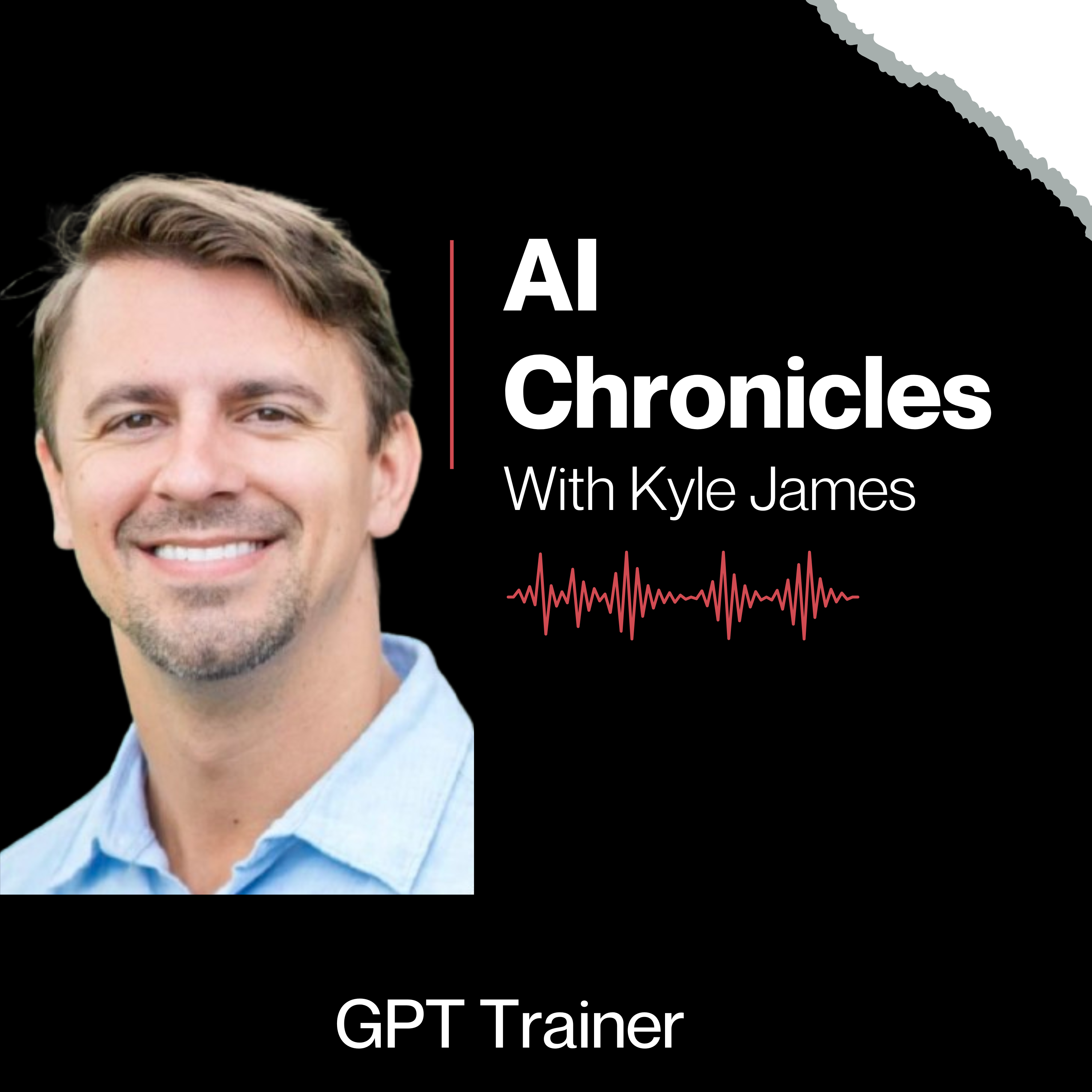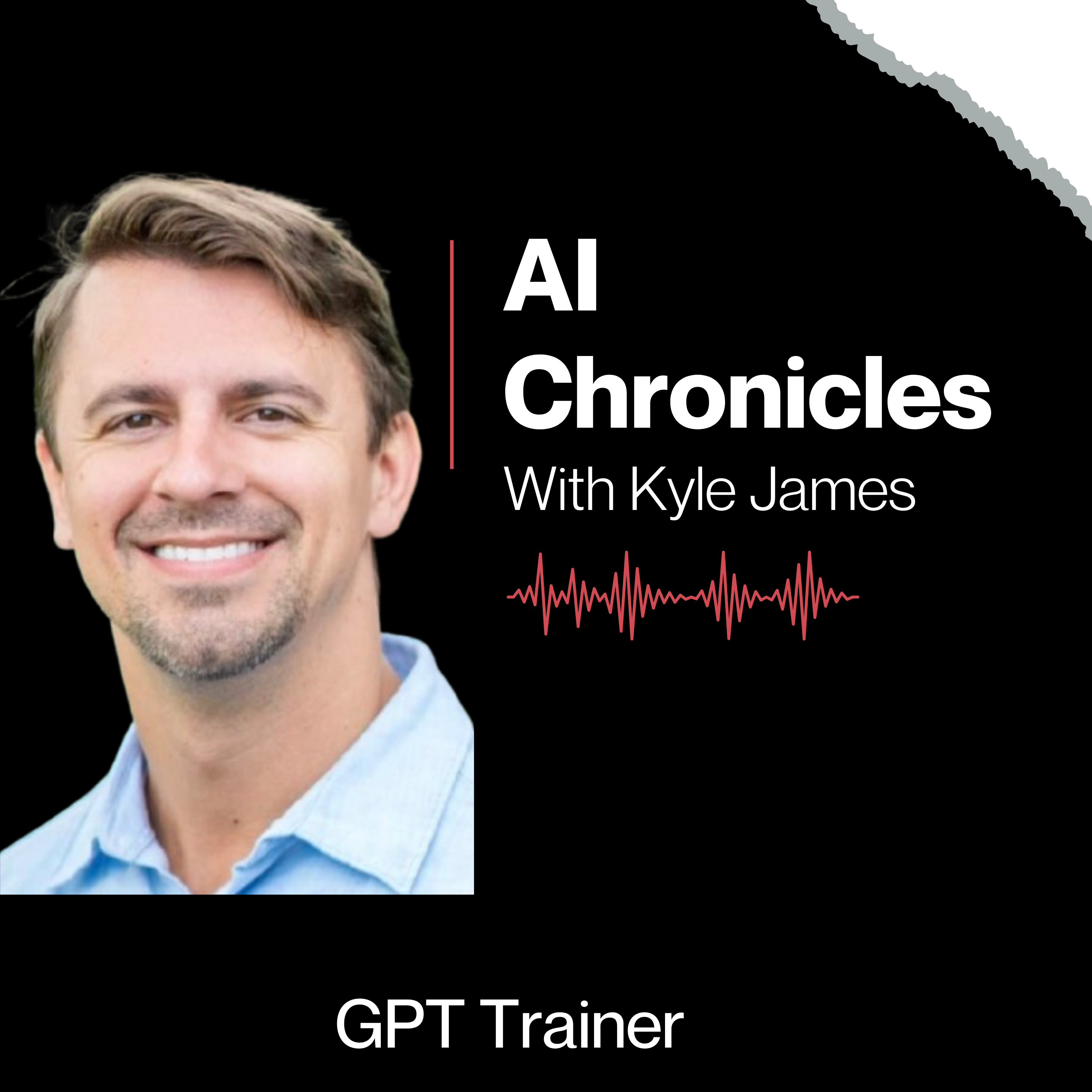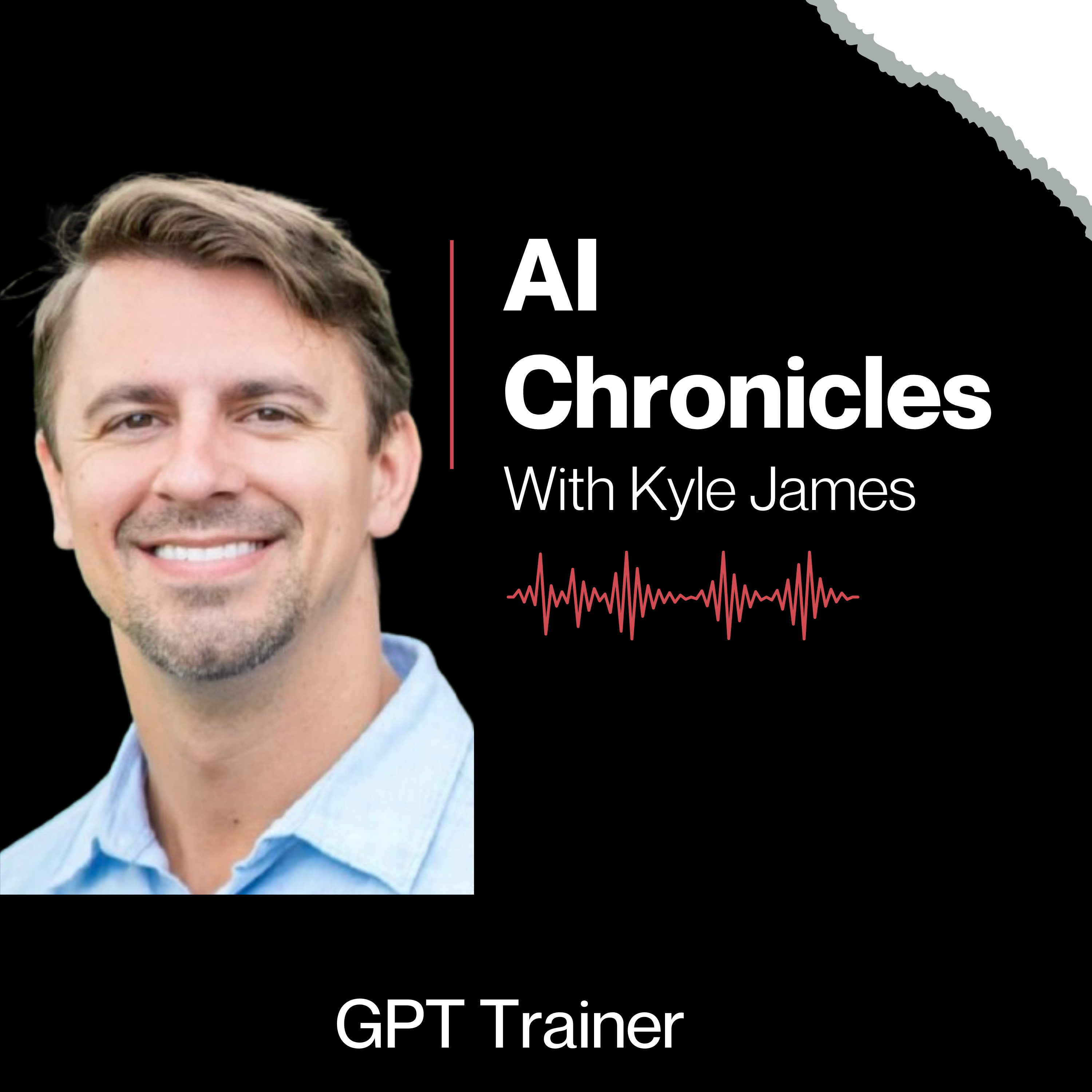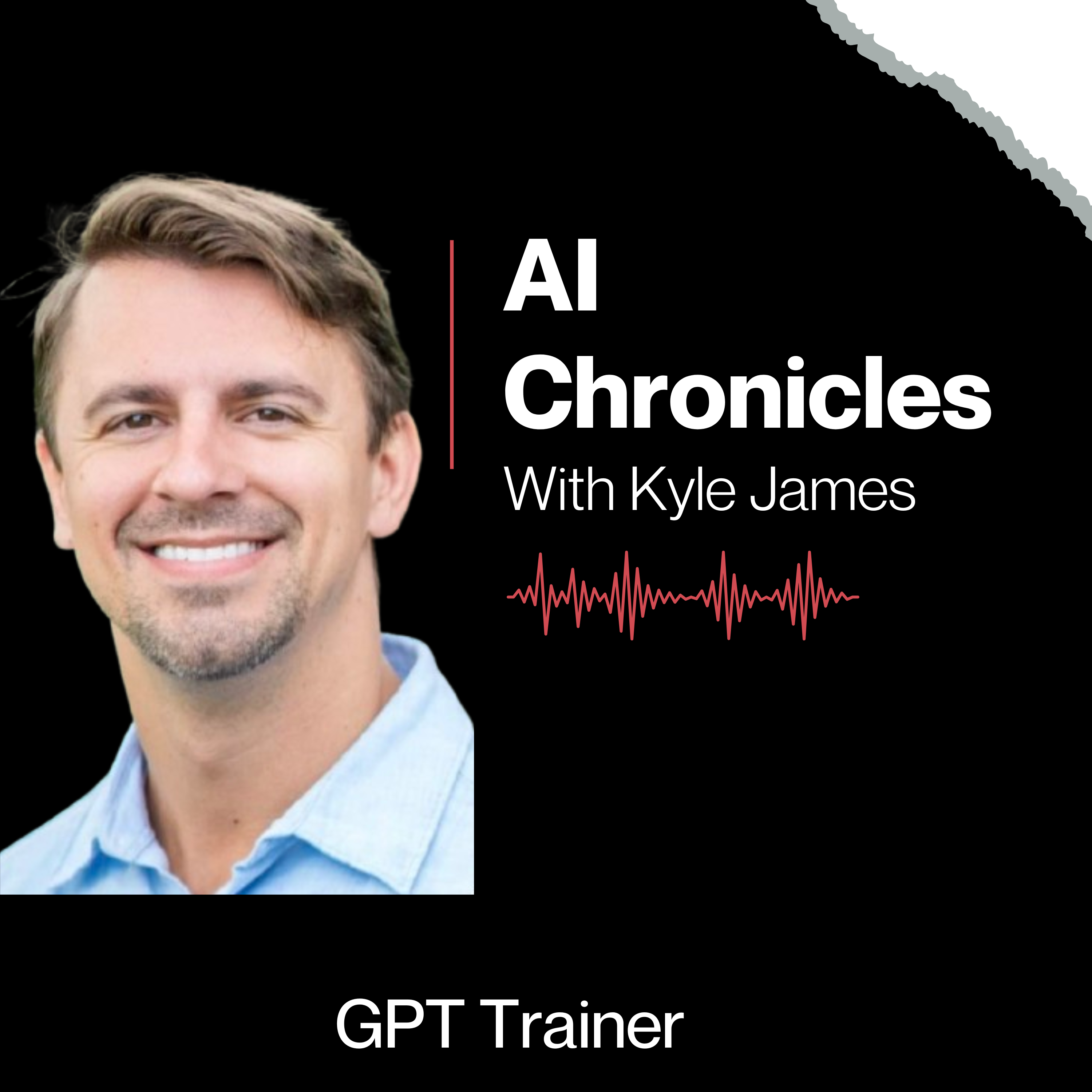Episode Transcript
Speaker 1 (00:00.416)
Hey, welcome to building the loyalty loop podcast. This is your host, Kyle James. Today we're to be discussing how an information technology company called Handmade Interactive was able to scale its clientele by building mobile apps and websites internationally. If you're an IT company, then you need to listen closely. Have you found that your AI agent is hallucinating or just mishandling basic conversations? Speak to GPD trainer. GPD trainer fully manages your AI agent for you.
eliminating hallucinations for good while drastically improving your AI agents response. Go to gpttrainer.com to learn more. And then for our guest today on the show, I have Mark Slater with me, who is the CEO of Handmade Interactive, a company based in Los Angeles, California that specializes in developing mobile apps and websites for international clients. Welcome to the show, Mark.
Thank you for the invitation.
Awesome. Super glad to have you on on board here today and having a quick podcast. So let's, let's jump into it. So I guess walk me through Handmade Interactive. Like how did you get started building websites?
Speaker 2 (01:11.064)
Well, way back when I was involved in advertising and designing print ads and directing TV commercials, as the web became more and more part of mainstream culture back in the early 90s, I decided to try my hand at it. I like to experiment and
kind of have a technical side to myself. So with a colleague, I built something. I kind of liked the results. People seemed to understand what I was trying to communicate. So I built another one and then another. And pretty soon I was hooked. I liked the fact that the internet
encompasses everything I had been doing up to that point. I can use my design skills, my video skills, but it also has the advantage of global reach and it's interactive, which is a whole other dimension. So within a few years, I had segued into web development while keeping my print and
video clients around, but most of my time was spent developing websites. And then of course, along came smartphones and we started building apps and here we are now.
Yeah. And looking at, so looking at your, you mentioned the two to three clients when you, when you started off, like who were your clients? How did you get them? Like walk me through how that process was gaining those clients.
Speaker 2 (03:01.454)
Yes.
Well, at the time, a lot of companies didn't really know what the internet would lead to. What, was this new thing and why would they need a website when they had all sorts of print ads out there and everything seemed under control. But I realized that we needed to stimulate demand. And so we did a lot of work pro bono.
I remember my first pro bono client was a public relations agency. They had no idea they should have a website or they would ever need one. And we built it kind of in stealth mode and then had the big presentation. They were very unimpressed, right? But we, they bought a domain and we put it online and then.
And then their clients started to pay attention to it and their clients wanted them to consult with them about using a website for their own self promotion. And one thing led to another. then we began charging the. You have to have an uncomfortable conversation sometimes with clients where you say that, okay, we're now at the point where any further work is going to generate an invoice.
How did you decide on when to start charging them? Was there a time frame of three months, six months? How do you figure that out?
Speaker 2 (04:41.326)
When you.
When you notice that the client actually values what you've done and that they're willing to pay for it, that's when you switch the relationship. Of course, in these days, the work is done a little bit differently where it's payable, billable from the very beginning.
How do you figure out when the right time, how do know when the value is being built to a client where you can finally start charging them?
Speaker 2 (05:19.278)
the
Speaker 2 (05:23.112)
You need to see how the client is using the website and what kind of impact the website. This had on their business and once it becomes an integral part of their operation and that they're willing to pay for it, then that's when you make make it clear that their relationship has become commercial. But.
The logic now is quite different where clients expect to pay right from the beginning.
But initially starting off though, you were providing a free service to your clients and then at some point it transitioned to where you weren't charging them or you started charging them immediately.
These days we charge immediately after extensive consultation. We do a lot of free work upfront where we are in the talking phase. We will visit the client, we'll have meetings, get to know them on a deep level, understand their mission, what their goals are, what their previous website experiences have been and where they'd like to be in a few years. And then we help them get there.
Speaker 1 (06:43.35)
And then kind of in your earlier days, I mean, when you first started, you know, having these clients that are paying you, what were some of the most common or bigger challenges that you faced with dealing with some of those clients?
Speaker 2 (07:00.27)
We started with a lot of mom and pop kind of retail level operations and small business is a struggle. Most of them fail eventually. Statistically, so. We tried to pick the winners and if the company was struggling and it looked like they.
weren't able to pay their bills anymore or were going under. And the website, a new website was sort of their last grasp of, know, last, I got a.
Speaker 2 (07:44.994)
Listen, can you ask that question again? This is.
Sure.
And this thing, the stamp thing looks like him.
came. that's funny. There we go.
Here we go. So that's a name.
Speaker 1 (07:59.662)
So you're good. Let's keep it going. talking about your earlier days when you mentioned that you had those first few clients that were you charging like a low amount, sort of like maybe challenges, either comment or the biggest challenges you faced with some of those clients that you were, they were paid.
Speaker 2 (08:26.894)
Clients in those days were not sophisticated as far as the potential of the Internet or mobile apps. They didn't realize the potential and the how it could transform their business. So I say the first challenge was to convince them of what they needed and that I was the person to get them there and to deliver that product.
So creating demand and then secondarily selling myself as opposed to the guy down the street as the person to do it. And you do that by showing commitment, by traveling to a client's location, even if they haven't signed a contract, you get on a plane and take them to dinner and spend a day in a conference room. You get to know their wife's name and where they went to college and...
Try to differentiate yourself.
We gradually sort of moved up the food chain from the retail level clients up to enterprises and large organizations.
Yeah. And, and like when you made that transition is because looking at the mom and pop like that, obviously it may not make sense to do a face to face with the mom and pop when they might be going out of business. So like, how did you differentiate of like, Hey, who do I spend time with? And who do I say, Hey, this is not good potential in the future. Like, how do you figure that out?
Speaker 2 (10:08.078)
Again becoming familiar with the client and their business and if you think That they have a future do they have the talent do they have the sophistication to succeed is it worth Starting a relationship with them so that they can grow and then we would grow as they grow and they're
You know, budgets, successful company tends to hire more people. The websites grow. They decide they need an app. So you want to hit your wagon to a fast horse, so to speak. And that just takes some instinct and getting to know, getting to know your clients before you get involved.
Yeah. You said something earlier that really caught my attention when you mentioned, you know, back in the early nineties and early two thousands, like where the website design was, you know, many people didn't know about it. There's a lack of knowledge with it. You mentioned, creating that desire, not desire, but creating the, the, the need, the demand for the, how do you, how do you, how do you do that? Especially in this today, right? When today it's, you've got all this different information technology, this new
know, breakthroughs that happen in the market. Like, what do you, how do you do that?
Speaker 2 (11:47.278)
Again, by sort of taking the first step and showing the client how they would benefit by using this thing that you've built just proactively. For example,
We built a chat bot for an organization. We scraped their website.
uploaded a lot of PDFs and we created a very sophisticated, kind of polished chat bot based on their 900 page website. And that was all done on spec just to dangle in front of them and convince them, Hey, wouldn't this be cool to have on your homepage? Wouldn't this enhance your user, your customers user experiences? Wouldn't this lead to more sales and more
More members. So. My work with AI these days often reminds me of the early days of the Internet where you need to create the demand and then. Satisfy that demand.
Absolutely. I love that. I love that example with the chat bots, just using that. So that's, that's a new thing that's coming in the market too with AI is happening. So, and as we transition here, Mark, mean, what talking a little bit about your clients and for those who are listening in, who want to learn a little bit more about your company, what, types of results would you say that you've been able to get some of your clients by creating websites, creating applications that maybe it's worth noting.
Speaker 2 (13:34.99)
We have a number of enterprise clients who have grown significantly over the last five years, 10 years. Of course, that's due to multiple factors. We can't take credit for everything, but we, think, have been instrumental in the growth of these companies, primarily because the traffic to their websites.
increases, sales on their websites increase, membership numbers, if it's that kind of organization, have increased. We had an organization that last year had almost 30 % increase in membership. And why was that? Well, maybe the fact that we completely redesigned their website was a factor and we made a much more valuable experience to visit than it had been previously.
And where can people learn maybe a little bit more about Handmade Interactive and about Umark?
We got our start as a corporation in 2003. We have a small office in the Pasadena area of Los Angeles. We've now expanded to an entire floor. have a staff of 18 people and our website is handmadeinteractive.com. We love phone calls. We love emails. We'd be happy to set up a meeting either on
premises or we will travel to you.
Speaker 2 (15:17.464)
Can I do that again, Kyle? That's another.
Yeah, absolutely. So again, I'll ask the same question. So, Hey Mark, so where can people, for those listening in, where can people learn a little bit more about handmade interactive and more about what you do?
Speaker 2 (15:33.934)
We got our start in 2003 in our present form as a LLC, and we grew from a one room office to an entire floor in the Pasadena area. We have 18 people. Everyone has a different specialty. Everyone is a full-time employee, some of them working remotely. And we...
We can be reached through our website at Handmadeinteractive.com. We'd welcome a phone call, email. Let's start talking. Come to us, we'll come to you. Initially, we like to show what we can do just...
Hey, no worries. do it again.
That's an edit. I use that word so you have to cut it out. I'm really sorry to waste your time. Let's do that again. I'm going to make it short and
We can cut it out.
Speaker 1 (16:32.686)
So, keep it short and sweet. I'll ask the same question. I'll ask the same question. So, Hey Mark, thanks for your time today. Now for people listening in, where can they learn a little bit more about you and about Handmade Interactive?
Speaker 2 (16:51.074)
We are open for business in the Pasadena area of California. I'm sorry.
You're good brother, you're good, you're good.
Speaker 1 (17:06.786)
You're good, No stress, no stress, right? Okay. You ready? So, Hey Mark, thanks for today. Appreciate you sharing more information for everybody. And where can people learn a little bit more about you and about Handmade Interactive?
Speaker 2 (17:24.568)
We're based in the Pasadena region of Los Angeles. We are open for business as a.
Okay. Here, how about this? How about this? So if I can make a suggestion, just say, Hey, you can visit us online at handmaidenteractive.com or a company based out of Los Angeles, California. We'd love to connect.
Yeah, you're right. Try that.
short as you want to it. I'll let you say, how about you say it first? Say it first for me.
Speaker 2 (17:59.962)
We are okay.
You learn more?
Learn more about us at handmadeinteractive.com. We're in Los Angeles, but we work globally and we would welcome a phone call, email. I'll just leave it at one fucking sentence, okay? Yeah, okay. Love to connect with you. You got it.
Exactly.
Speaker 1 (18:31.446)
Okay, ready? No stress. Okay. Hey, Mark. Thanks so much for today. Appreciate your time. And for those who are listening, where can they learn a little bit more about you and then more about Handmade Interactive?
Speaker 2 (18:45.986)
We're online at Handmadeinteractive.com and we'd love to hear from you.
Awesome. Great. Absolutely amazing. And we're to wrap it up from here. Thank you so much, Mark, for joining us and sharing more insights about Handmaid Interactive and how they've been making an impact to clients since the 1990s on the website development application side of things. amazing. And remember, if you're an IT company and your AI agent is hallucinating or just mishandling basic conversations, go to gpttrainer.com to learn more about how we help our clients fine tune their AI agents. Thanks for listening in. Hope you had a wonderful.
Hope you have a wonderful rest of your day and looking forward to seeing you on the next episode of building the loyalty loop.



